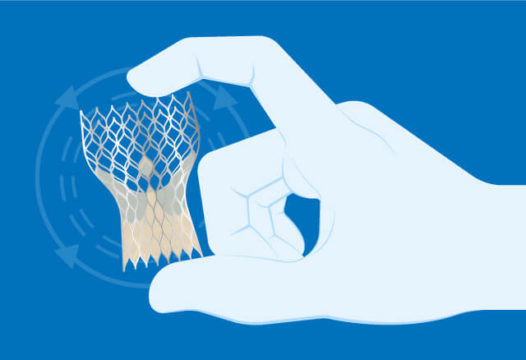Aortic valve replacement (AVR) is recommended for symptomatic aortic stenosis (AS), while close monitoring is the advised strategy for asymptomatic patients, unless they have elevated aortic gradients, reduced ejection fraction, or abnormal stress tests.

However, the optimal timing for AVR remains uncertain, especially in light of recent evidence suggesting that AS patients showing signs of myocardial damage have increased long-term mortality and worse outcomes, even in the absence of symptoms.
In the current era, transcatheter aortic valve replacement (TAVR) procedures offer more favorable risk and recovery profiles compared with conventional surgery. However, a better understanding of this strategy in asymptomatic or minimally symptomatic patients with severe AS is still required.
The aim of this retrospective study was to assess the outcomes in patients with minimal symptoms treated with TAVR due to their severe aortic stenosis.
The primary endpoint (PEP) was defined as a composite of adverse events at 30 days, including death, stroke, major bleeding, stage III acute kidney injury, need for dialysis, and moderate to severe paravalvular leak.
Among 231,285 patients with AS treated with TAVR, 20% had minimal symptoms. The average age was 80 years, and 47.5% of subjects were women. The 1-year survival rate was higher in patients with minimal symptoms compared with those with moderate or severe symptoms (hazard ratio [HR] for death: 0.70 [95% confidence interval (CI): 0.66-0.75]).
Furthermore, patients with minimal symptoms experienced a 2.7-point improvement (95% CI: 2.6-2.9) in the quality of life questionnaire at 30 days and a 3.8-point improvement (95% CI: 3.6-4.0) at one year, in contrast to increases of 32.2 points (95% CI: 32.0-32.3) at 30 days and 34.9 points (95% CI: 34.7-35.0) at one year in more symptomatic patients. Patients with minimal symptoms were more likely to be alive at one year (odds ratio [OR]: 1.19 [95% CI: 1.16-1.23]).
Conclusion
In summary, this study demonstrated that patients with minimal symptoms due to aortic stenosis experienced fewer complications after the procedure and better outcomes at one year after TAVR compared with more symptomatic patients. Randomized clinical trials are needed to confirm the safety and efficacy of TAVR in asymptomatic or minimally symptomatic patients with severe aortic stenosis.

Dr. Andrés Rodríguez.
Member of the Editorial Board of SOLACI.org.
Original Title: Outcomes of Transcatheter Aortic Valve Replacement in Asymptomatic or Minimally Symptomatic Aortic Stenosis.
Reference: Chetan P. Huded, MD, MSC et al J Am Coll Cardiol Intv 202.
Subscribe to our weekly newsletter
Get the latest scientific articles on interventional cardiology





